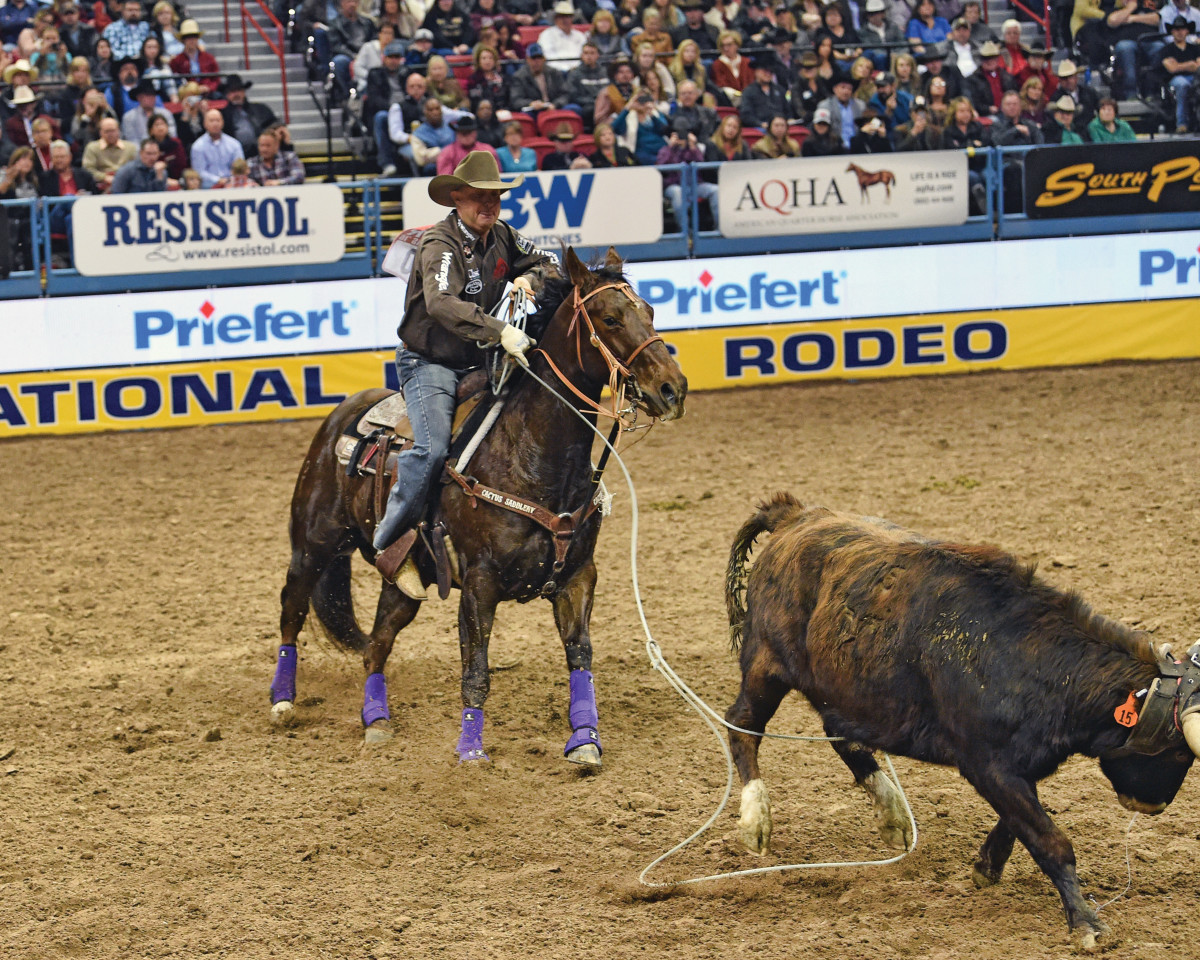When Rey Shines on Top came up sore last year, it couldn’t have come at a worse time—just two days before the two-time Heel Horse of the Year was to step on a trailer to Las Vegas for the 2016 Wrangler NFR.
Elite rodeo hands in Arizona (where the Minors prepare for the NFR) prefer Gary Kauffman, DVM, so Minor immediately sent the horse to Dr. Kauffman
to try to figure out why he felt “off.”

A subtle injury like Rey’s can be so difficult to diagnose that it’s a good time to pick the brain of one of today’s top vets on protocol.
A horse in this kind of example has no swelling, not much heat and doesn’t flinch to the touch anywhere. Nothing obvious, in other words. Your vet doesn’t have much to work with, so consider throwing a saddle in the trailer so the horse can be evaluated while being ridden, and ask the vet to evaluate him on both hard and soft surfaces. Your vet should also be able to determine which limb or limbs are involved, keeping in mind the problem could be bilateral in front or back.
Hoof-testing obviously needs to be done prior to diagnostic nerve blocking. However, Dr. Kauffman warns that a recent British study found hoof-testers to only be 30 percent reliable. He believes that to be true, although they tend to help you discover an abscess or sore spot on the sole.
“Still, the level of rodeo horses that
we deal with are so stoic, many will even have an abscess and not really flinch,” he warned.
At this point, you can locate pain with nerve blocks starting at the heel (depending on how the lameness presents) and working up to mid-pastern, then ankle, then just below the knee to catch suspensory ligament and inferior check ligament areas. Keep in mind that a shoulder injury can muddy the waters, but a horse will appear less sore weight-bearing than he will be tardy bringing his foot forward in that case.
With Rey, the source of pain was located in a front foot. Unfortunately, that was all the information the horse would give them. When radiographs are clean and there’s no other outward signs, only an MRI can reveal a bruise or tear in the foot. However, that costs around $2,000, so it’s generally a last resort.
“He went sound with Soft Rides and Bute, so it seemed like a bruise,” Minor said.
Rey went to Las Vegas on anti-inflammatories. However, when Dr. Kauffman talked to Minor by phone after the Saturday night performance, he was told Rey was still sore.
“I said, ‘Let’s just do a standing MRI, with no anesthesia, but we need to know what’s going on,’” said Dr. Kauffman. “We’d gone too long without finding out. I arranged an MRI here in Phoenix, I think on Tuesday morning.”
But the prospect of sending your good horse on a 10-hour roundtrip for an MRI a few nights into the NFR is not a great one. Instead, a veterinarian on-site in Las Vegas administered pain-relieving and anti-inflammatory medications. Minor was devastated when, by Round Five, Rey became very lame. He was forced to borrow a horse.
A late-December MRI showed slight fraying of a ligament in Rey’s foot. Finally, after four full months off, Rey was sound and Minor sent him to a racetrack rehab facility near Seattle for hydrotherapy for five weeks. He began riding him in early June, but opted to let Rey wait out the first 10-day run of summer, including Reno.
That was a smart strategy. Dr. Kauffman recommends 45 to 60 days of riding before a healed-up performance horse is put back into competition. He knows better than most that an injury to a good horse is always a blow, but to someone roping for a living, it’s devastating. That guy’s only option is to borrow a horse or try to get by on the one that’s compromised.
“The terrible timing was certainly part of the big picture with Brady,” said Dr. Kauffman. “He wasn’t about to hurt that horse, even if it meant he couldn’t finish the NFR. That’s something I really appreciated on my end. He’s a true horseman in every sense of the word.”
Dr. Kauffman’s extra points to remember with a sore-footed horse:
• Bruises can cause lameness for up to a month, so just because your horse doesn’t get better right away doesn’t mean it’s not a bruise.
• Radiographs rarely help because foot injuries in rodeo horses are nearly always soft-tissue injuries. If unresolved, those can eventually involve bone adjacent to the tissue. Recent MRI reports are showing that what vets call ‘navicular changes’ are usually initiated by a tear in the nearby ligament evolving into bone calcification or cartilage loss.
• After an injury, remember that a horse on daily Aquatread therapy needs to have his feet prepped. Over-moisturizing will change the texture of the foot. Ask handlers to apply some kind of waterproof grease—even Vaseline—to both the bottoms of the feet and the hoof walls prior to submersion.










